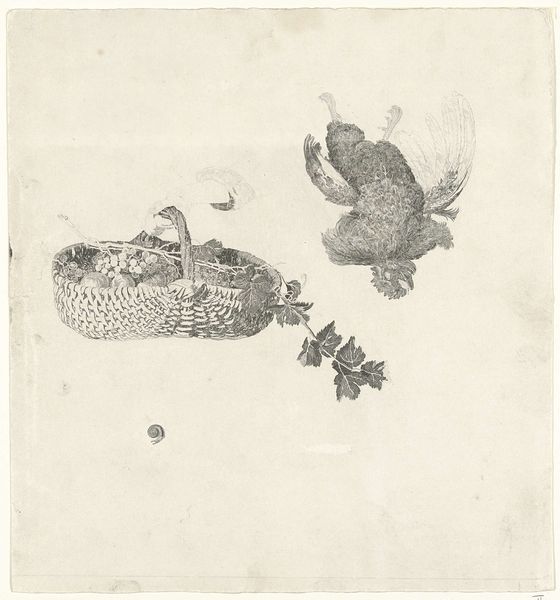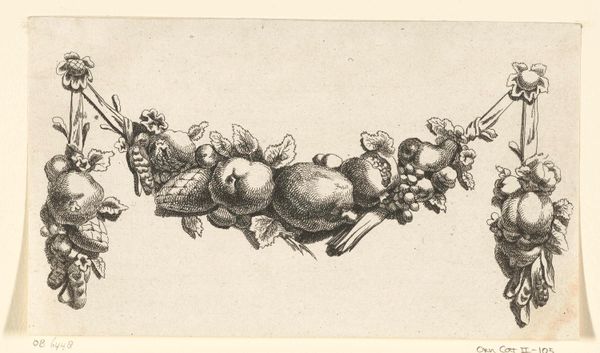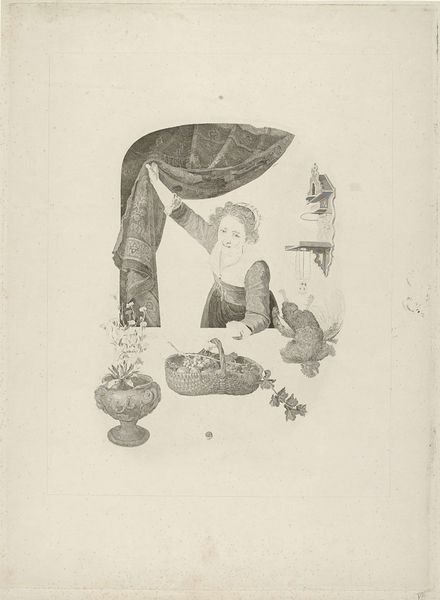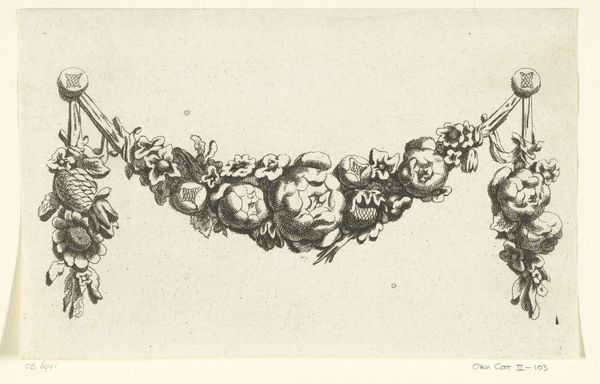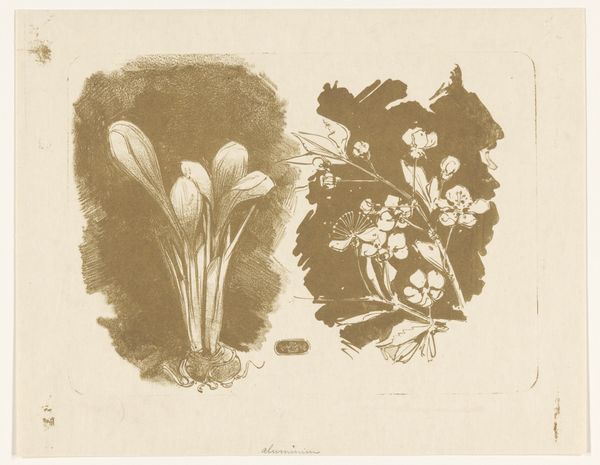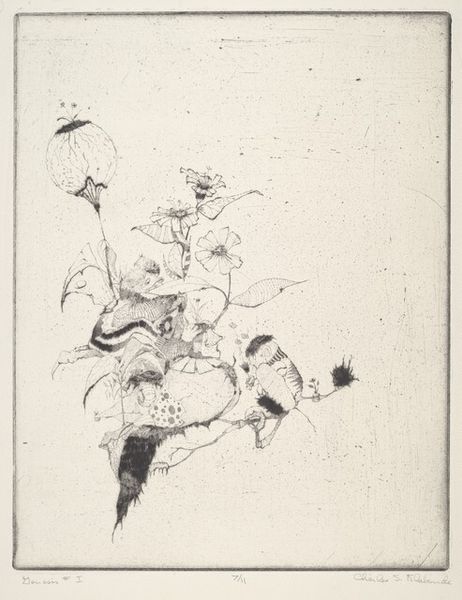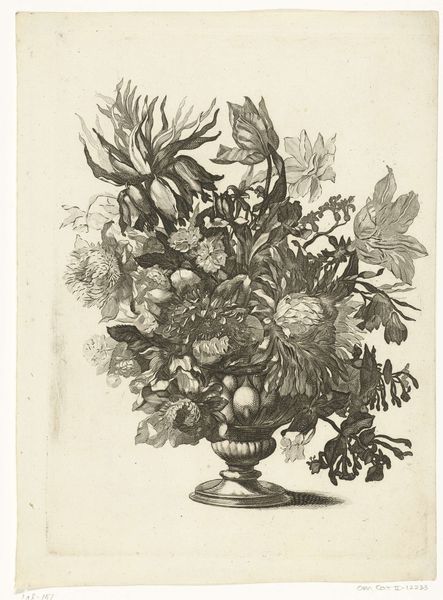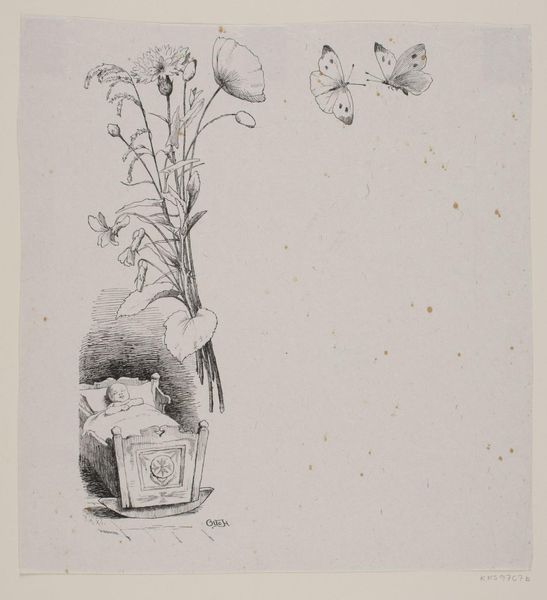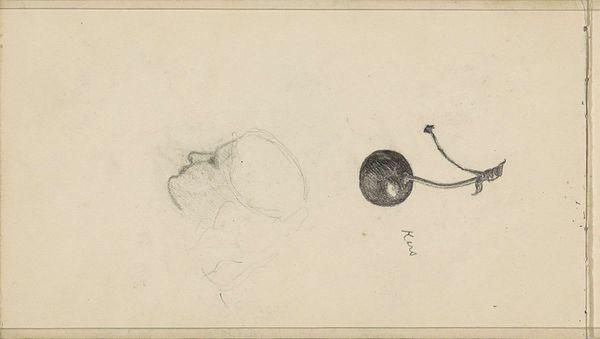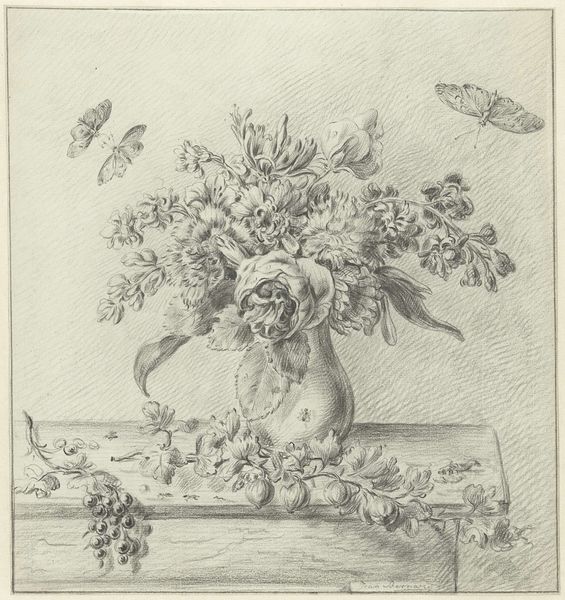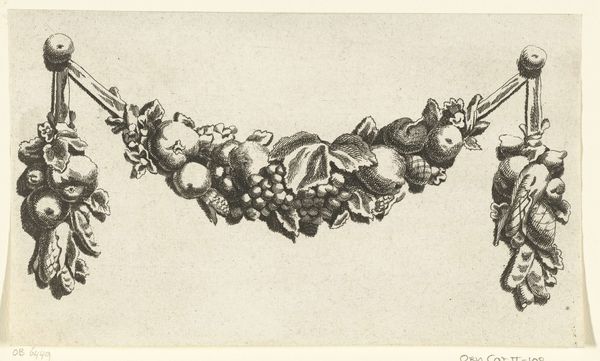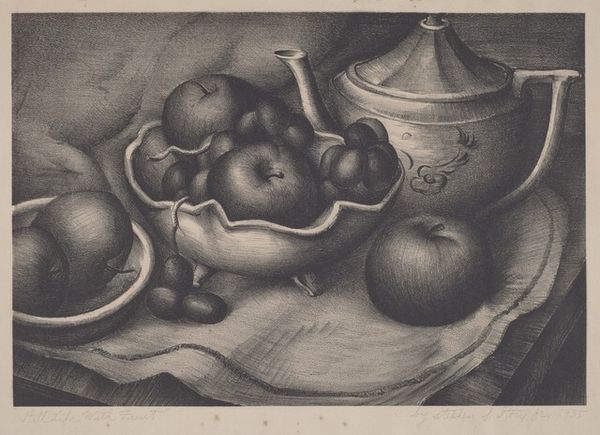
Vrouw met mand met vruchten in de hand bij het raam 1840 - 1842
0:00
0:00
henricuswilhelmuscouwenberg
Rijksmuseum
drawing, pencil
#
drawing
#
geometric
#
pencil
#
realism
Dimensions: height 250 mm, width 340 mm
Copyright: Rijks Museum: Open Domain
Curator: Before us we have "Vrouw met mand met vruchten in de hand bij het raam," dating from around 1840-1842, by Henricus Wilhelmus Couwenberg, currently held in the Rijksmuseum collection. Editor: It has such a still and quiet sensibility, like a meditation on transient abundance. I am fascinated by the pencil drawing of objects suspended across an empty ground! Curator: Yes, the materials speak to the piece. We see the artist chose pencil, resulting in muted tones. Look closely at how that impacts the textures. The basket weave feels almost palpable, contrasting with the ethereal bird figure. What do you make of the geometric forms? Editor: They present such interesting socio-historical cues. This is a drawing featuring natural abundance, so I feel obligated to comment on Dutch still-life painting’s function as both a status marker but also as a marker of Dutch merchant power. These things weren't available everywhere to everyone. Curator: Precisely. The choice of subject matter tells us something about consumption in the period. But also, think about Couwenberg’s technical choices. The detailed precision evokes realism, doesn't it? Consider how academic artistic traditions pushed realism and perfect representation. Editor: I agree, that’s clear, and looking at this today in a museum makes me consider how the politics of display and institutional practice determine which works rise to prominence. It's like this drawing is not just showing fruit and fowl; it is exhibiting a whole worldview. The museum has clearly decided to preserve this viewpoint! Curator: And how its display impacts our view of Dutch still life production. Do we see it in dialogue with later work, for example? Or separated to isolate some cultural essence? So many curatorial possibilities that alter our reception. Editor: Thinking about its presentation and materials lets me leave with the recognition that every work on display also had to have a context in which someone cared enough to preserve it. What's saved and celebrated reflects a society’s values. Curator: I like that. Ultimately it shows that a drawing can hold worlds, prompting us to look deeper into materiality, presentation and politics embedded within.
Comments
No comments
Be the first to comment and join the conversation on the ultimate creative platform.
